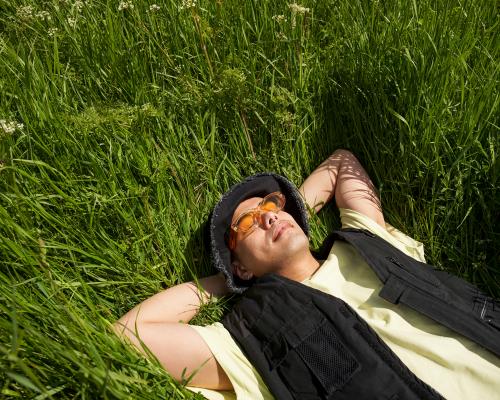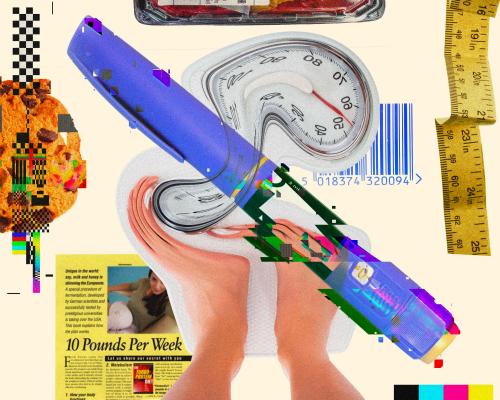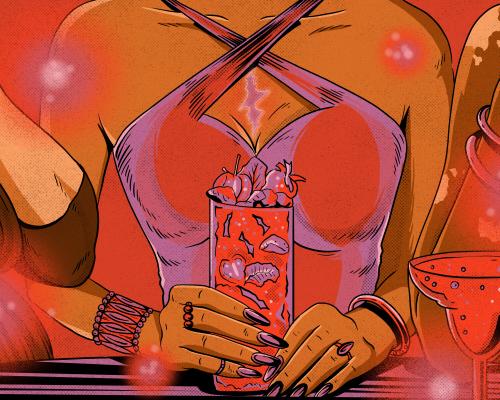
Helene Rutledge, a healthcare executive and entrepreneur, has one type A friend (she counts herself as one too), one hybrid and another who is a “massive type B”. That friend is the kind you might hesitate to buy an expensive ticket for because there’s a chance she might not show up.
“But in the spur of the moment, she’ll do something amazing,” says Rutledge, like the time her daughter was setting up a new apartment. Out of the blue, the type B friend showed up with a full set of dishes and a KitchenAid mixer.
“We appreciate her ability to be completely spontaneous,” Rutledge says of her friend. “She inspires us to be more free-spirited.”
The type B personality is having a moment. On TikTok, videos on being and celebrating type B have thousands of views; plenty also poke fun at it. The virality has given some a label for how they operate; maybe you’re type B at work or navigating type A spaces.
But it is not a scientifically validated way to understand personality. Over the last 50 years, it has become clear that there are no personality types, explains Colin DeYoung, the lab director of the DeYoung Personality Lab at the University of Minnesota. Instead, personality is more like a spectrum of traits.
Categories may be comforting, but they can also be limiting. So why do we keep returning to them? Experts say they can help us understand human behavior and contemporary culture. But digging deeper into how personality works offers its own sort of satisfaction, and an honesty that goes beyond typology.
What does it mean to be type B?
Types A and B are more or less “historical artefacts”, says Christopher Soto, a psychology professor at Colby College. They were introduced in the late 1950s by cardiologists linking personality to heart attack risk. Type A behavior was characterized as competitive and work-driven, while type B emerged as the less aggressive, laid-back opposite – essentially the antithesis of type A. (The tobacco industry funded much of this research as part of a strategy to blame something other than cigarettes for poor health.)
Is the type B personality real?
Over time, early findings related to types A and B didn’t hold up, says Soto. High anxiety correlated with health issues, but being conscientious and diligent were actually linked to better health.
It’s also evident that most people don’t fit neatly into either type. Today, most personality researchers take a trait-based, rather than type-based, perspective, says Emorie Beck, an assistant professor at UC Davis who specializes in personality psychology. The gold standard for describing these trait differences is the Big Five model. The Big Five traits – openness, conscientiousness, extraversion, agreeableness and neuroticism – are broad dimensions, explains Beck. People vary in their degree of each trait.
Still, popular culture holds on to types. Definitions vary slightly, and people tend to highlight the traits they like, says Soto. For example, Rutledge views type A as being goal-oriented and punctual. Alexey Novikov, a clown and editor who feels more type B, views type A as rule–bound and capitalistic.
“I don’t want to be type A,” says Novikov. “They seem tightly wound.”
Why is the type B personality going viral?
As work culture has grown more intense and productivity-focused, interest in the type B personality has grown, says Soto. It may be a reaction to hustle culture. As people resist constant pressure, a more relaxed mindset is appealing.
Rutledge has observed this rising appreciation for type B qualities. Once, society idealized type A drive in the workplace. Now, growing burnout and dissatisfaction at work have nudged people toward an appreciation for type B traits, she suggests.
For Novikov, the appeal lies in detaching from traditional notions of success. He used to work with many type A people and realized it wasn’t for him. “Moving away from that has given me a lot more headspace to enjoy my life,” he says.
Typologies can reflect cultural niches, says Beck. People connect with labels that match traits they admire. Seeing others with the same label can feel validating, she explains.
Kimberly Williams, an HR manager, says the type B conversation helped her realize she’s not an outlier: “It’s made me lessen this yearning to be a perfect type A person.”
Why is the type A/type B idea so persistent?
Despite shaky scientific support, the type A/B concept persists. Why do we keep coming back?
“It’s a question personality scientists have to live with,” says Soto. “People are naturally drawn to certain personality models that are not the ones best backed by science.”
But he gets it – Soto became interested in studying personality after taking a personality test in high school. Results can be thought-provoking and feel accurate. He acknowledges that being sorted into “different boxes” is an easier way to think about complex concepts.
Such categories – including type A/type B, Myers-Briggs personality types and Enneagram numbers – are often broad and positive. It can be easy to identify with where you’re placed – that’s their flaw, but also part of the charm, explains Soto.
While not harmful in themselves, personality typologies can be misused, says Soto. Companies sometimes overvalue certain types and use flawed tests to match hires. There’s also the issue of self-criticism if you don’t fit the ideal.
“For a long time, I would get down on myself because I wasn’t type A,” says Williams. Now she and her friends can laugh about it – and hold each other accountable. “It’s like, ‘OK guys, we know we’re all B so we need to put some controls in place and get here on time,’” she says.
Is there any benefit to the type A/type B dichotomy?
At the very least, it’s simple. Beck says thinking in terms of traits can feel messy, especially when you also consider complexities like the idea that it may change depending on the situation.
JoAnna Wendel, a science writer, says that she can appreciate her type A or type B qualities depending on the context. She values work boundaries and doesn’t feel the need for things to be a certain way. But she does feel type A when it comes to timeliness and scheduling in her personal life.
“I’ve been the type A person on a trip with type B people,” says Wendel. “We’ve got to get to the airport on time – I’m not running down the terminal.”
But traits are not fixed. They can shift over time, shaped by life or intention. “There’s this lingering idea that people’s personalities can’t change, but that’s not true,” says DeYoung. If you want to change, Beck recommends practice, like allowing yourself to be bad at something if you’re overly concerned with success.
Thinking in terms of traits, rather than types, also helps explain why people react differently to the same scenario, says DeYoung. This can help us see the strengths associated with our traits and find a path that fits who we are, he explains.
Susannah Bard, a managing director of a creative agency, says that not acting type A felt like a hindrance when growing up. “I thought not being super good at school would mean I wouldn’t be successful in the workforce,” she says.
Instead, she’s found the opposite to be true. In a career where thinking freely and creatively are prioritized, the qualities associated with type B are advantages.
“We’re all individuals with different strengths and tendencies, and the range of all that probably takes up the whole alphabet,” says Bard.





